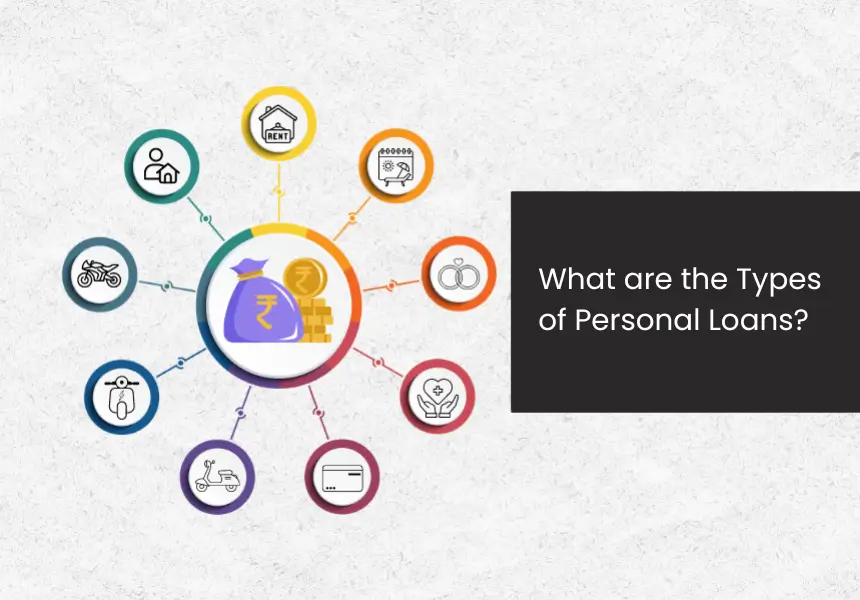
When you take out a personal loan, you are expected to repay it over an agreed period of time by making monthly payments, called Equated Monthly Instalments or EMIs. The EMI is a combination of the outstanding principal and interest. During the early EMIs, the interest component is usually higher and the principal lower. But, over time and with each passing EMI, the interest component becomes lower and the principal higher. Towards the end of the repayment period, the interest is negligible and the bulk of the EMI amount goes towards reducing the outstanding principal. To plan all this efficiently and accurately, you need a loan amortization schedule.
What is a Loan Amortisation Schedule?
A Loan Amortisation Schedule is a table or chart that gives a detailed repayment plan for a loan. It shows how the monthly payments (EMIs) will reduce the outstanding principal and interest. It gives a clear picture of how and when the loan will be repaid. It is best practice to make an amortisation schedule before applying for a loan.
Preparing an Amortisation Schedule
Preparing an amortisation schedule involves a systematic process to outline the repayment structure of a loan. To create this schedule, you must gather key information, such as the loan amount, interest rate, and loan term. Using this data, you can calculate the monthly payment using an amortisation formula or an online calculator. The schedule will then display a month-by-month breakdown of payments, showing the portion allocated towards principal and interest. It also reveals the remaining loan balance at each interval. By preparing an amortisation schedule, borrowers gain a clear understanding of their payment obligations, enabling them to plan their finances effectively and make informed decisions about their loans.
Methods for Amortisation Schedule
There are various methods to amortise a loan. Below are some of the methods to create an amortisation schedule.
Straight Line
The method known as straight-line amortisation, or linear amortisation, evenly distributes the total interest amount throughout the entire duration of a loan. This approach is commonly used in accounting because it is simple to implement.
Declining Balance
The declining-balance method is a faster approach to amortisation in which the interest payment decreases over time. In comparison, the repayment towards the principal increases as the loan ages. This method allows for accelerated repayment of the loan and is commonly used to accelerate the loan payoff process.
Annuity
In this method, a loan is amortised through a series of regular payments made at consistent time intervals, typically in equal amounts. There are two main types of annuity: ordinary annuity, where payments are made at the end of each period, and annuity due, where payments are made at the beginning of each period. This method ensures that the loan is gradually paid off over time, with each payment contributing to both the interest and principal. It is a widely used approach in financial planning and lending due to its simplicity and regularity.
Bullet
Typically, bullet loans do not follow the traditional amortisation structure, where the loan is gradually paid off over its life. Instead, these loans often involve periodic payments that only cover the interest charges. The final payment at the loan’s maturity is then responsible for repaying the entire principal amount, leaving a significant portion unpaid throughout the loan term. This characteristic of bullet loans sets them apart from other loan types and requires borrowers to plan for the larger final payment at the end of the loan’s term.
Balloon
A balloon loan bears some resemblance to a bullet loan in that it typically requires the full repayment of the principal amount at maturity. However, there are instances where a balloon loan is amortised with smaller periodic principal repayments, while the majority of the principal is left unpaid until the loan reaches its maturity. This characteristic distinguishes a balloon loan from other types of loans and necessitates borrowers to be prepared for a larger principal payment due at the end of the loan term.
Negative Amortisation
The negative amortisation method refers to a situation where the total payment period is shorter than the interest charged for that same period. In other words, the borrower’s payments are not sufficient to cover the accruing interest during that specific period. This results in the unpaid interest being added to the loan balance, causing it to increase over time. The negative amortisation method is characterised by a growing loan balance instead of a decreasing one, which can have implications for the borrower’s overall debt and repayment obligations.
Conclusion
A personal loan amortisation schedule serves as a valuable tool for borrowers and lenders alike. It provides a detailed breakdown of monthly payments, interest amounts, and the remaining loan balance. By analysing this schedule, individuals can gain a clear understanding of their repayment structure, plan their finances effectively, and make informed decisions about their loans. The schedule also reveals the total interest paid over the loan term and the estimated payoff date, empowering borrowers to stay on track and potentially save on interest costs. Overall, a personal loan amortisation schedule is an essential resource for managing personal loan obligations and achieving financial goals.








